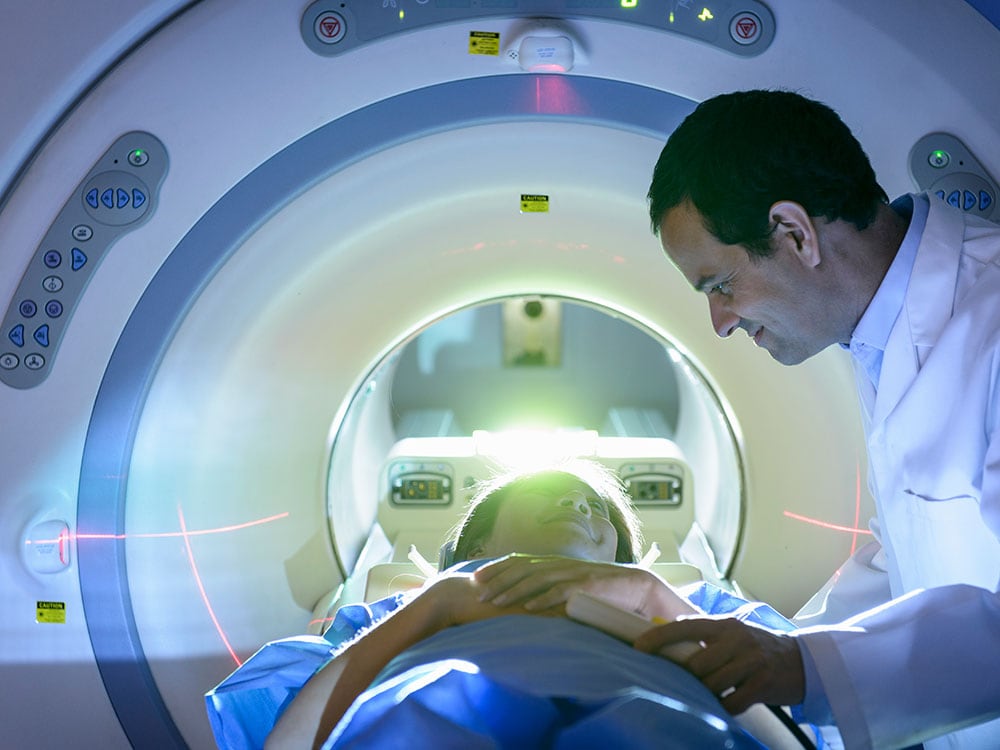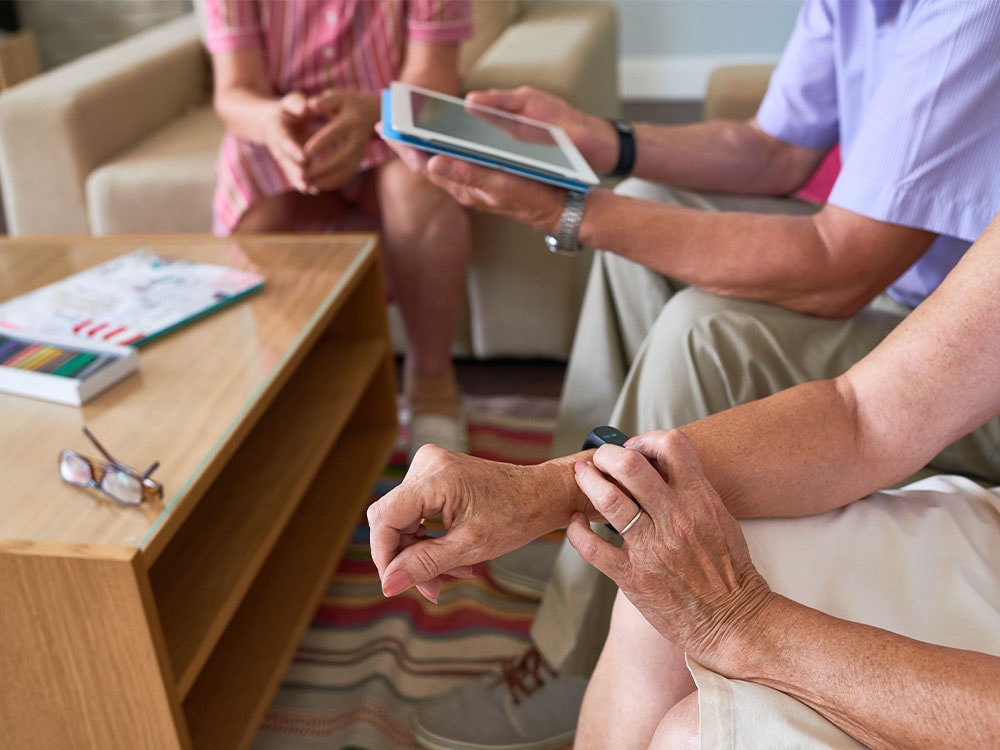 By Stephen Watts November 13, 2023
By Stephen Watts November 13, 2023
The Internet of Medical Things (IoMT), a subset of Internet of Things (IoT) technologies, comprises inter-networked devices and applications used in medical and healthcare information technology applications. IoMT devices connect patients, doctors and medical devices — including hospital equipment, diagnostic gear, and wearable technology — by transmitting information over a secure network.
Much like general IoT devices, IoMT, also known as healthcare IoT, uses automation, sensors and machine-based intelligence to reduce reliance on human intervention during routine healthcare procedures and routine monitoring operations. By providing patients and providers with enhanced access to a patient’s healthcare information, IoMT reduces the need for unnecessary doctor’s office and hospital visits. IoMT also lowers costs for both patients and providers.
As the IoMT market matures, telehealth and telemedicine will continue to transform healthcare as we know it, allowing for more thorough and accurate diagnoses, more timely care and cost savings for consumers and providers alike.
IoMT and Telehealth/Telemedicine
Telehealth is defined by the Mayo Clinic as “the use of digital information and communication technologies, such as computers and mobile devices, to access healthcare services remotely and manage your healthcare.” As with the term “healthcare,” telehealth comprises a broad spectrum of activities, including patient-doctor communications, diagnoses, ongoing monitoring, and education and counseling.
Telemedicine, on the other hand, has generally been used to define a more limited spectrum of technology-based healthcare tools that provide clinical services, namely the remote diagnosis and patient monitoring.
When telemedicine emerged in the 2000s, the technology was limited in scope. Early telemedicine applications were strictly clinical in nature, limited to services such as screening a potential patient over video or monitoring an ICU patient’s vital signs from a remote location. As telemedicine evolved, its capabilities quickly expanded beyond the strict boundaries of clinical medicine, resulting in the broader term telehealth. Today, telehealth is broad enough to include doctor training and administrative meetings held in a video chat room, in addition to clinical services.
Once distinct, the two terms are now used more fluidly, and many sources use the terms interchangeably.
While telehealth and telemedicine both refer to a large group of technologies, services and strategies, IoMT refers specifically to the devices that allow them to function. Without IoMT connectivity, telehealth would be largely impossible; at the same time, an IoMT device is fairly useless by itself. For example, a device that records a patient’s blood pressure every day and uploads that reading to the cloud does nothing on its own to improve that patient’s health. A broader telehealth solution is required to interpret those readings, diagnose a condition, devise a treatment plan, deliver therapies and monitor the patient over time. While some of these efforts may be possible through artificial intelligence (AI)/machine learning and other computer-based technologies, at some point, an actual human physician will need to get involved.

Common Benefits of IoMT
IoMT holds numerous benefits for both patients and healthcare providers.
- Personalized, precision diagnoses and therapeutics — Many IoMT devices are designed to track a patient’s vital signs in detail and depth, to a degree that wouldn’t be possible during a brief office visit. For example, with a month’s worth of blood pressure or pulse rate readings, a doctor can more accurately diagnose a condition and create a more personalized and effective treatment plan.
- Remote medical treatment and advice — The very nature of IoMT devices means they can capture data from anywhere — such as a patient’s home — then transmit that information securely to the physician, all without requiring a visit to the office.
- Patient empowerment — IoMT devices such as wearables and smart scales let patients take control of their vitals, giving them information they would otherwise have to visit a doctor to get. Rather than waiting for an annual checkup, patients can now keep tabs on their health in real-time
IoMT Provider Benefits
- Cost control – With the cost of medical care ballooning in recent years, providers are embracing cost-effective healthcare technologies. Goldman Sachs has predicted the savings from IoMT technologies, namely remote patient monitoring, would total about $305 billion.
- Improved patient monitoring – Chronically and seriously ill patients need more intensive monitoring, sometimes requiring around-the-clock care. IoMT devices allow physicians to monitor patients from afar without having to rely on human caregivers, alerting them instantly if something goes awry.
- Upgraded operations – IoMT improves hospitals’ operations by giving providers and administrators easier, centralized control over their facilities. IoMT devices can provide them with more visibility into their environment, and provide physicians with new technologies like robotic surgical aids and high-resolution digital imaging systems.
Common Challenges with Implementing IoMT
Implementing IoMT is not without its share of challenges, the biggest being security and privacy. Medical data is highly regulated — most notably by the Health Insurance Portability and Accountability Act (HIPAA) — and providers have a heavy burden to prevent its compromise. Introducing IoMT devices into the environment invites some level of risk, largely due to the copious amount of additional data that flows between patients and providers.
Interoperability and standards are other hurdles that IoMT vendors face. In an ideal world, healthcare IoT equipment from one vendor would work seamlessly with another vendor’s infrastructure, but that hasn’t been the case, and uniform standards have been elusive. While some certification processes have emerged, the industry is still a long way from having universal interoperability.
Another ongoing issue — and perhaps the most difficult to resolve — is the inability to update IoMT devices. While IoMT devices are state of the art when they’re released, once a device is in the field, it can be difficult to upgrade or update with new features. Consumers are unlikely to upgrade their wearable devices or connected devices every year, and hospitals are generally slow to roll out expensive new equipment, resulting in a patchwork of products with different capabilities across the market. Upgrades become even more of a challenge with implantable devices, such as pacemakers, that are surgically embedded.
Common Types of IoMT Devices
IoMT devices span a wide range of categories, including:
- Consumer-grade wearables – Smart devices that include Fitbit and other fitness monitors, activity trackers, and Apple watches, among others.
- Medical-grade wearables – Regulated, clinical-level products that are used under the guidance of a clinician, including devices designed to manage pain, improve physical performance and resolve other health issues.
- Remote patient monitoring (RPM) devices – Systems that help manage chronic diseases, usually placed in the homes of patients who are undergoing long-term care.
- Personal emergency response systems (PERS) – Wearable devices that allow a patient, often a senior, to quickly call for help to a care provider in an emergency.
- Smart pills – An emerging category of devices that can be swallowed by a patient, wirelessly transmitting data about a patient’s internals to medical providers.
- Point-of-care devices and kiosks – Mobile devices, ranging from ultrasound machines to blood glucose meters, that can obtain diagnostic information and other health data — whether they are in a doctor’s office or in the field — without the need for a full laboratory.
- In-clinic monitors – Similar to point-of-care devices, except that they can be managed remotely, without the need for an expert care provider on-site.
- In-hospital devices – A large segment of devices, including MRI machines, used to track hospital assets, monitor patient flow, track inventory (such as pharmaceuticals), and manage other hospital resources.

The Importance of Security for IoMT
IoMT devices offer numerous benefits including convenience, improved quality of care, and lower costs, but all of these come with some level of risk, so security is of paramount importance for IoMT devices. The healthcare security market alone is predicted to hit $8.7 billion by 2023, according to Frost & Sullivan.
The most significant risk that patients face is losing confidential medical data that could be embarrassing or damaging to them if exposed. That risk weighs heavily on providers as well, since they can be held liable financially — and even criminally — if their customers’ data is breached. At the highest level, HIPAA carries a maximum penalty of $1.5 million for each year a provider is in violation, as well as a prison sentence. As such, it is essential that patient data be kept safe using the strictest of security protocols.
Consumer health data isn’t the only target that hackers are after. Providers and healthcare organizations are faced with a variety of additional types of attacks. Medical fraud — in which a hacker uses the credentials of someone else to obtain drugs or medical services — is a common concern. And much in the same way that other kinds of businesses are attacked through their computer networks, cybercriminals may also target specific medical devices for health information (a smart pacemaker, glucose monitor or insulin pump, for example) and disable them online in exchange for a ransom, potentially putting patients at risk. IoMT devices can be potential entry points (or direct targets) for all of these types of attacks.
IoMT vs IoT: What's The Difference?
The Internet of Things (IoT) has grown into a sprawling category that includes (at last count) over 7 billion devices that range from smart refrigerators and connected thermostats to robotic factory equipment and smart vehicles. As IoMT is a subset of IoT, the two categories naturally have much in common.
Though many healthcare IoT (IoMT) devices are purely medical in nature, such as a robotic surgical assistant, for instance, many IoMT devices can also be considered part of the more general IoT category. For example, a smartwatch, that monitors pulse rate and blood oxygen — clearly IoMT functions — is also a general consumer device used for receiving text messages, providing navigational directions, and the like.
Over time, the lines separating IoT, IoMT and other subsets of IoT will continue to blur.
The Connected Healthcare Market
The IoMT market is divided into two major groups: consumers and healthcare providers. The providers can be further subdivided into various subgroups that include physicians, laboratories, clinicians, and hospital management. Pharmaceutical companies and even retailers like drugstores can also be considered secondary members of the IoMT market.
Deloitte recently estimated that the global IoMT market would be worth more than $158 billion, spread evenly among North America, Europe, and Asia-Pacific regions. South America and the Middle East/Africa regions will be smaller — but significant — participants in the market.
How healthcare providers leveraging IoMT
IoMT devices are transforming healthcare and patient care as we know it, and this trend shows no signs of slowing down. According to Deloitte, more than half a million different types of IoMT devices are already on the market. These new technologies aren’t just bringing patients and providers closer together, they’re making possible new types of treatments and improving consumers’ quality of life.
IoMT devices and healthcare IoT are making it possible for providers to more quickly and accurately make diagnoses while improving their ability to monitor at-risk patients. In addition, IoMT and healthcare IoT are reducing the overall costs of providing service while expanding caregivers’ reach to patients who may not otherwise be accessible. And hospitals and clinics are using IoMT to operate healthcare IT systems more efficiently and cost effectively.
The Bottom Line: IoMT and telehealth are transforming healthcare
IoMT isn’t an elusive, hypothetical category that may or may not be realized in the future. IoMT technologies are already here, and they’re making a difference in the lives of millions, giving them better control over their health and improving communications with healthcare providers. Meanwhile, IoMT is also becoming a key technology for physicians and other providers, enabling them to make better diagnoses in less time — often without having to see patients in person. The financial benefits of IoMT are also considerable, with hundreds of billions of dollars in savings likely to be realized in the years to come.
What is Splunk?
This posting does not necessarily represent Splunk's position, strategies or opinion.
